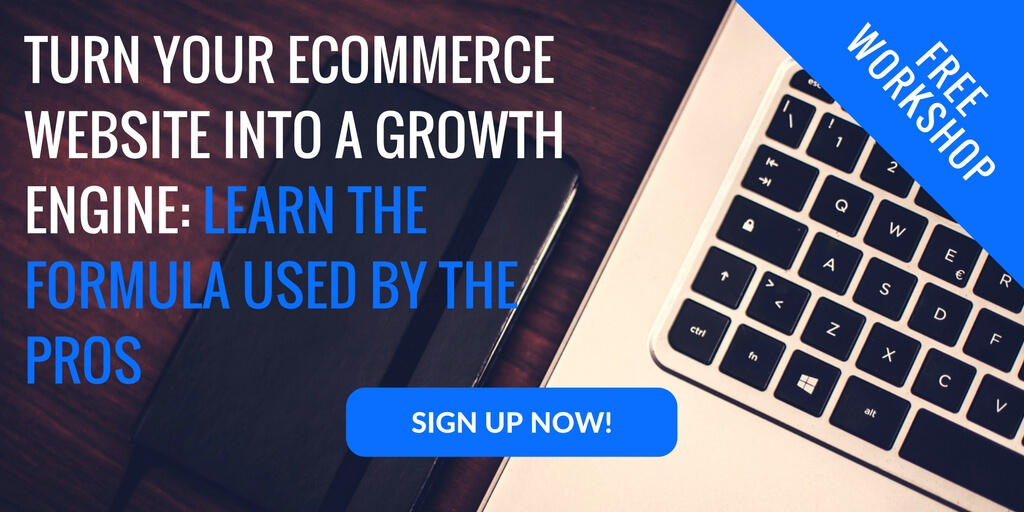Learn Why Wishlists Are Costing You Money: 3 Tactics to Optimize Your Shopping Cart Recovery
More often than you think, your customers are using their shopping cart as a wishlist: they add items to their cart that they like, but they just leave them there without purchasing.
That, in turn, leads to shopping cart abandonment.
The items they’d like to buy are in their cart…and maybe they’ll buy them later…maybe.
68% of all online shopping carts are abandoned.
So how does that apply to your business?
This means that for every 1,000 potential customers who add items to their cart, 680 will leave your ecommerce store without making a purchase.
This post is going to take a closer look at the 68% of consumers who abandon their carts, and illuminate proven solutions and actionable tactics you can use to stop them from using their cart as a wishlist and turn those “maybes” into sales.
[content_upgrade]Do you have a high cart abandonment rate? Download 3 Ways to Battle Wishlists & Prevent Shopping Cart Abandonment to see 3 preventative examples that will turn “maybes” into completed sales![/content_upgrade]
Do Your Customers Use Their Shopping Cart as a Wishlist?
When your customer makes a purchase, they go through a series of stages:
- Awareness
- Consideration
- Intent
- Decision
At any of these four stages, a customer might add a product to their cart without intending to buy it. They’re creating a wishlist! Let me explain:
Awareness
This is where the customer realizes they have a need for something and that your product meets their needs.
At this stage, your potential customer is still considering all their options. They are likely to add an item to their cart and leave it, with no serious intention of buying now.
Consideration
At this stage, the customer will look at your product closely, perhaps even comparing it to your competition to see whose offer is best.
Customers who are “considering” might leave items in their shopping cart as a “wishlist” to easily compare prices between brands.
Intent
This is where the customer has decided they definitely want a product and have chosen from which brand they are going to purchase it.
At this stage, potential customers might leave items in the shopping cart because they are distracted by something else (too many CTA’s in your checkout, for example), or plan to buy… but not right this second.
Decision
Decision, or ‘purchase’, is the act of making the final purchase. When your customer has reached this stage, they may have used their shopping cart as a wishlist, but decided to go ahead and complete their purchase.
This is the obvious stage you want your customers to reach.
Why Your Customers Abandon Their Shopping Carts
You might think the reason their customers abandon carts is because they no longer want the products or never had the intention to buy in the first place.
It’s important to remember there are SO many reasons why a potential customer might abandon their cart, and “just creating a wishlist” is one of them..
Let’s look at a few examples from ecommerce brands of how to turn a wishlist into a completed purchase:
ASOS Displays Free Delivery In Their Pop-up Shopping Cart
Displaying a ‘free shipping’ offer could be your secret weapon. (We’ve written before about why you should double-down on this marketing tactic.)
ASOS shows their “free delivery and returns” offer in their popup cart.
This is an effective conversion strategy because users creating a “wishlist” will first view their items in this preview or popup cart.
Even if they have no intention of buying, seeing that they will save the shipping cost AND be able to return the item for free is a very strong conversion tactic.
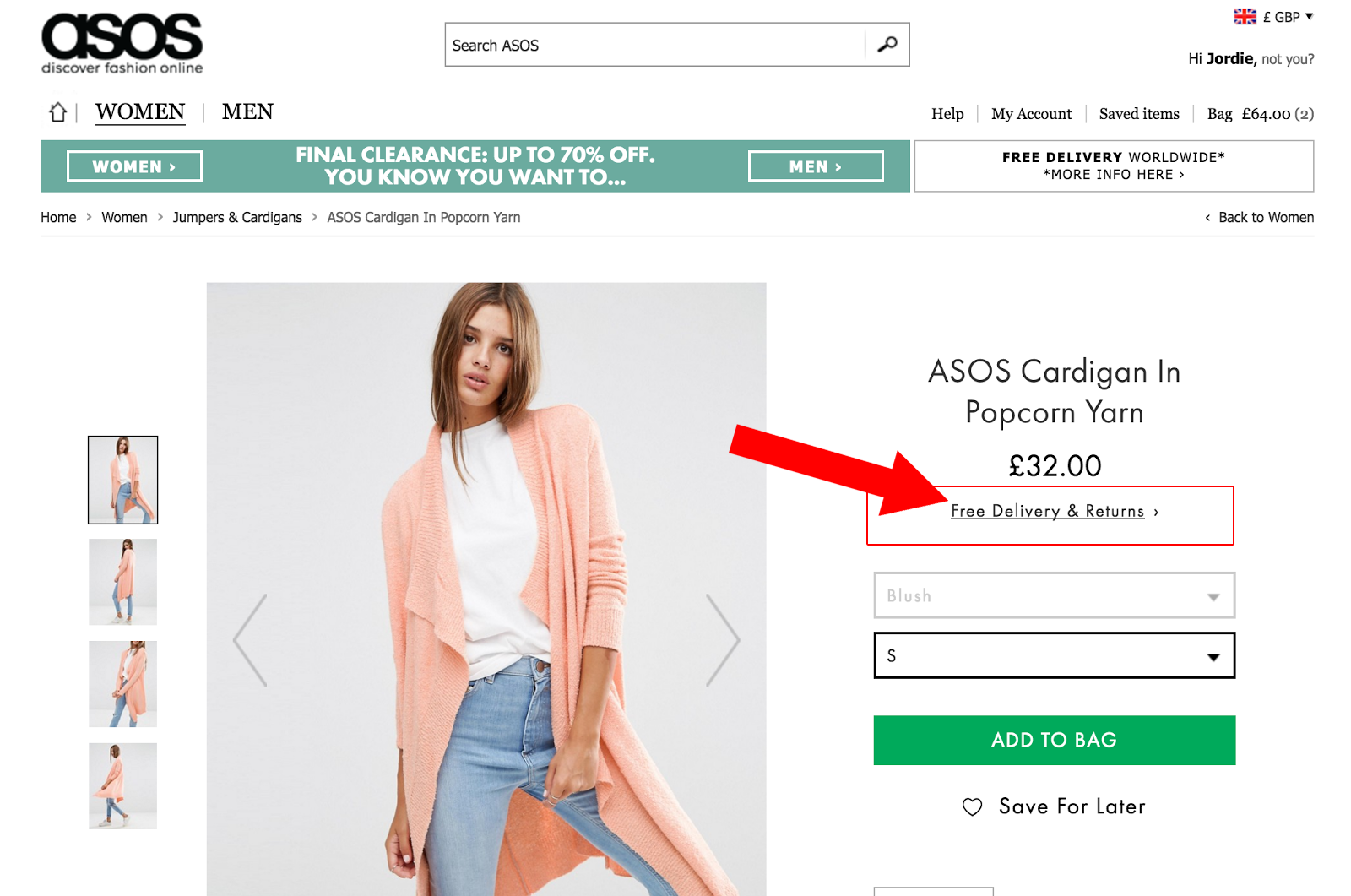
Make Sure Your Free Shipping & Free Returns Offers Stand Out
Oftentimes brands aren’t obvious enough when advertising their ‘free shipping & returns’ offer. If you have one in place, make your offer as visually obvious as possible!
People buy with their eyes, so the more you emphasize how small a risk it is to purchase the better chances you have of converting that shopper.
Digitally Native Vertical Brand (DNVB), Ledbury does this in their email/newsletter popup.
As you can see below, Ledbury puts a reminder of their free shipping, returns, AND 10% off front and center with their newsletter signup.
This provides a (not so subtle) nudge towards purchasing to those using their shopping carts as a wish list.
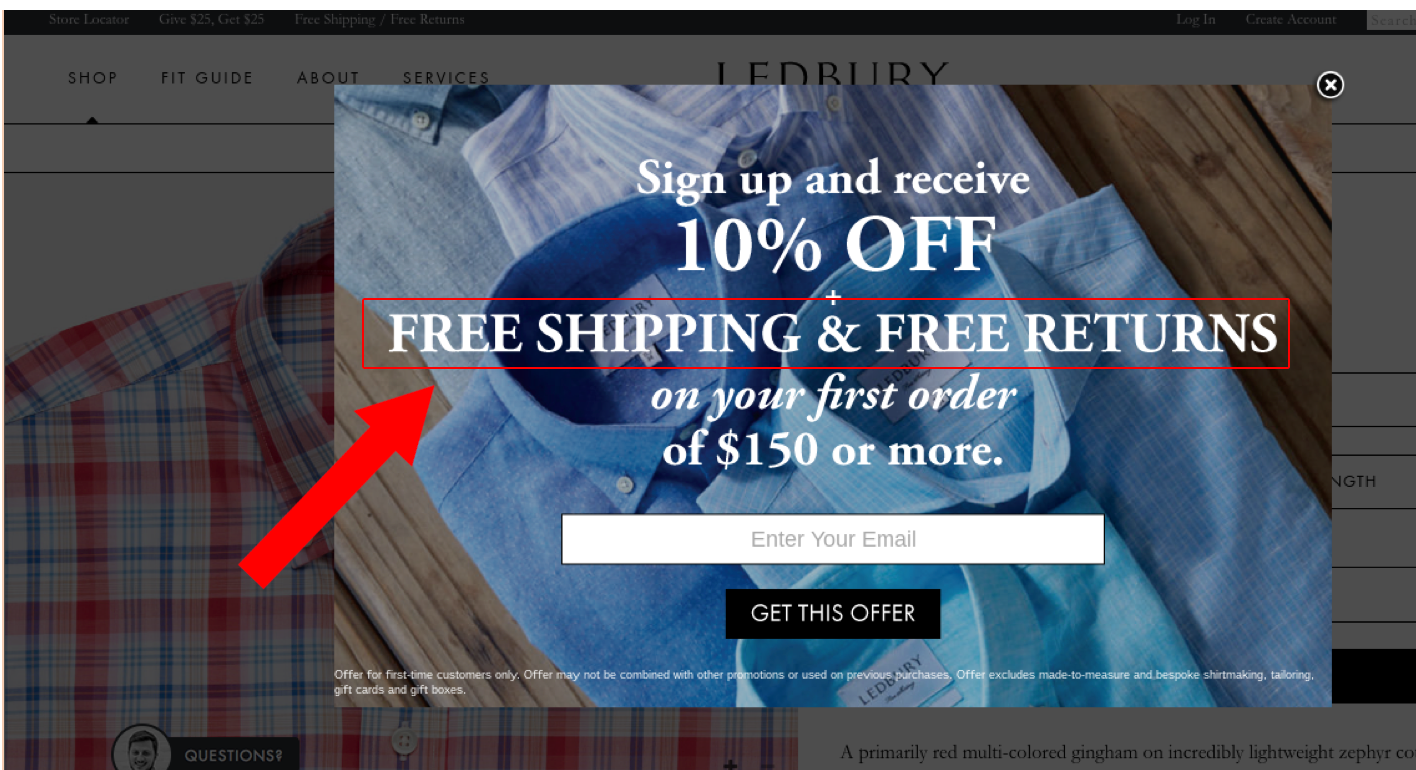
Offer Something Custom (Product Bundles)
If customers are able to customize their product in some way, they’re more likely to convert because they’re buying something unique to them.
Not all business models will allow for custom products, but if yours does, it’s a good way to increase conversions and reduce cart abandonment.
If your store doesn’t offer custom products, think about utilizing product bundles like Birchbox’s “Build Your Own Hair Travel Set”.
This example is a blend between a custom product and a bundle. Essentially, customers are customizing their bundle.
The fact that they were able to assemble their own kit makes it feel more personal than just selecting individual products.
If a customer were to select each item one-by-one, they would be likely to be “wishlisting” and not building a product that feels like their own.
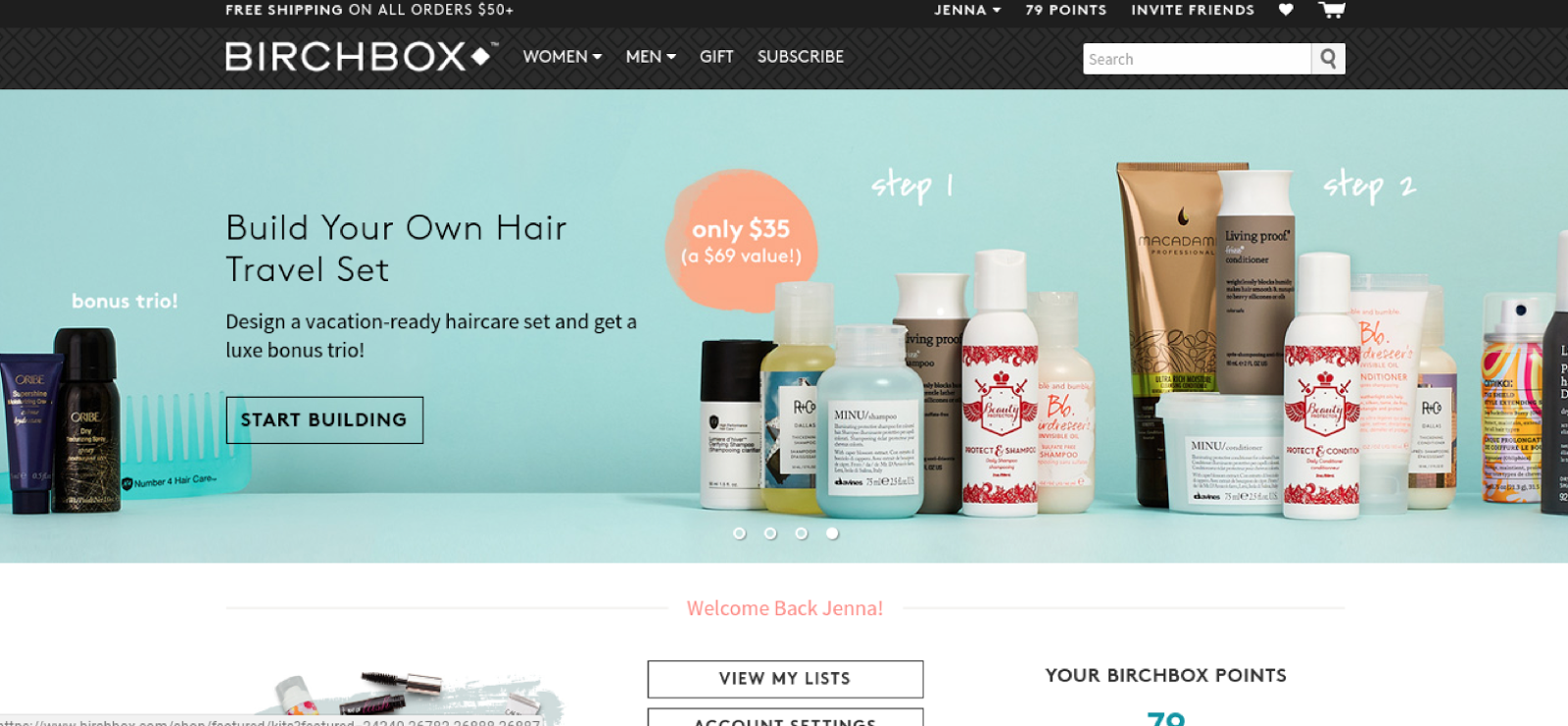
Another reason this approach works is because the customer sees only one price for the bundled kit. Whereas, if they’d added items to their “wishlist” or cart individually, they’d be seeing multiple prices.
Seeing one single, price makes a user more likely to convert.
Shopping Cart Session Regeneration Helps…A LOT
Cart session regeneration is the idea of restoring what customers put in their carts across devices to make their customer’s experience seamless.
It’s estimated 37% off all ecommerce transactions involve the use of multiple devices.
Meaning, whilst your potential customer might browse on their mobile, they might make their final purchase on their laptop.
How Cart Regeneration Works
Customers will use one device (laptop, tablet, or phone) to browse through your products, adding the ones they like to their cart.
They decide to keep the products they’ve added in their cart as a wishlist. They’ll come back later to actually purchase them.
An effective way to give those customers a little “push” is to send them a cart abandonment email: “Hey, looks like you forgot something in your basket!”
Or with a subject line like this one from another fast-growing DNVB, MeUndies: “Did you mean to leave that there?”

Now if the customer is actually incentivized to click-through and see what they left in the basket, this is where cart regeneration comes into play.
When the customer clicks on the link, everything he or she previously had in their basket is still there!
Chubbies does this effectively with their cart abandonment email. They use a large CTA that takes the customer back to their cart to continue their shopping.
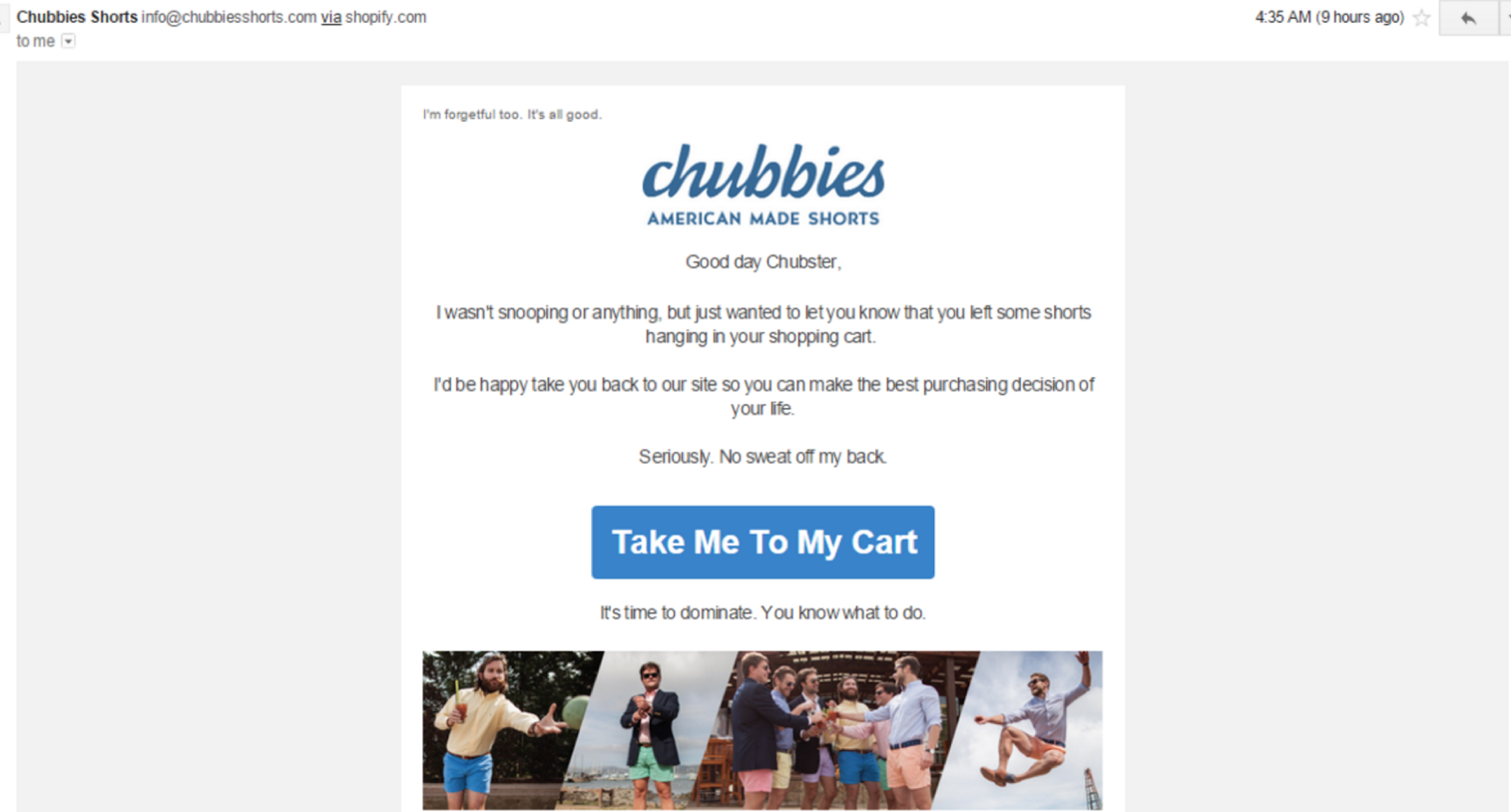
Why Cart Regeneration is Effective
Customers are fickle. It’s normal for them to be indecisive and use their shopping cart as a wishlist. The best thing you can do is to make it as easy as possible for them to purchase those exact items when they do decide to come back.
That means it should be easy for them to purchase the items from desktop even if they added their products from mobile.
Mobile commerce represents 35% of total ecommerce transactions globally. And we recently reported that mobile commerce saw an almost 100% growth in 2015.
Where online retailers are missing out is faulting to implement cart regeneration across all devices.
In 2015, nearly 4 in 10 transactions occurred on multiple devices! (source) Think of the revenue you could capture if your customers could seamlessly shop from one device to the other!
ConversionXL did a case study where they tested session regeneration off (control) vs. session regeneration on (variant) inside Autoplicity.com’s cart abandonment campaign.
Their hypothesis:
Without cart regeneration, it is more difficult for consumers to complete the checkout process on different devices. Adding cart regeneration to the abandoned cart email campaign will increase conversions.
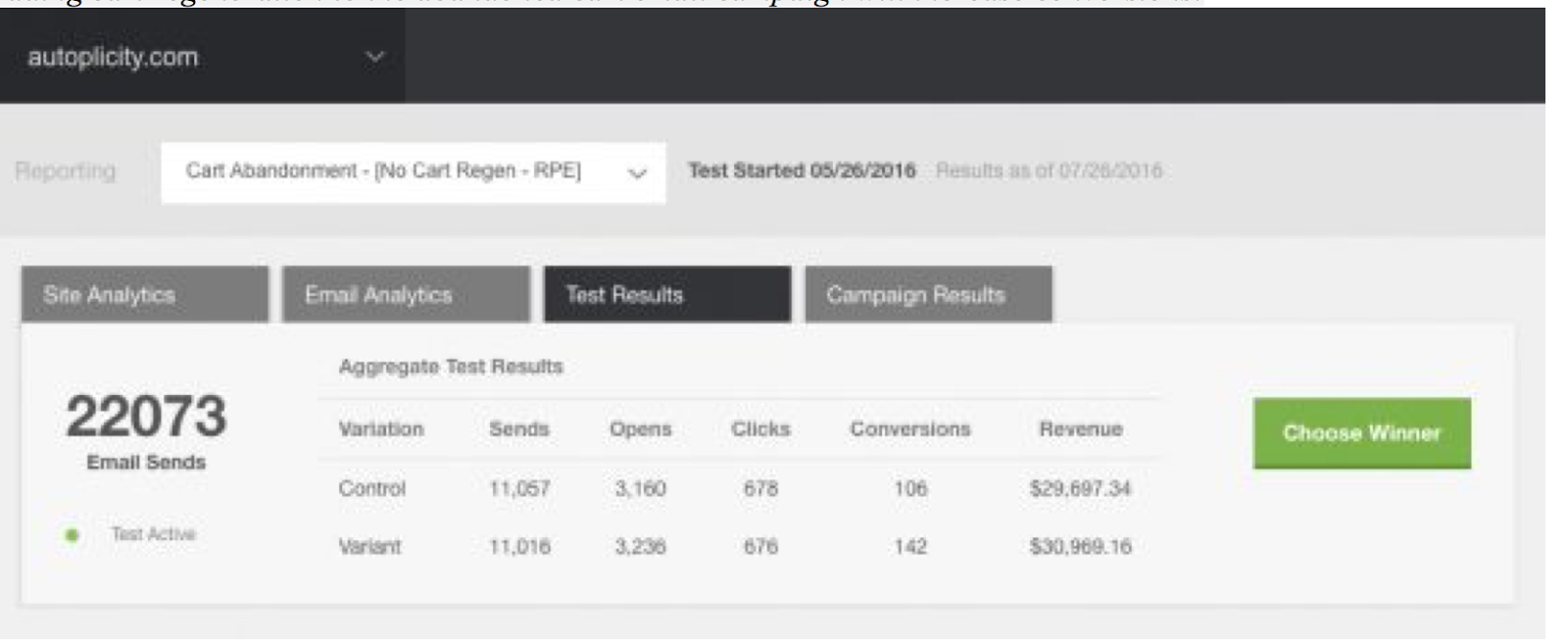
Results: The variant (which had cart regeneration ON), outperformed the control and yielded a 33.96% increase in conversions.
This test proves your checkout should aim to have as little friction as possible, even across devices.
How To Combat “Wishlisting” On Your Ecommerce Website
Customers using their shopping cart as a wishlist is normal due to the nature of decision-making when purchasing online.
But that doesn’t mean they have to abandon those items.
It’s up to you to employ an effective strategy to convert those wishlists to sales.
To recap, remedies we suggested include:
- Making sure your “free shipping/free returns” offer is placed in your preview or popup checkout
- Displaying your “free shipping/free returns” offer in an OBVIOUS way
- Utilizing cart regeneration in combination with your cart recovery email strategy. Solutions like Bronto and Rejoiner offer cart regeneration as part of their feature set.
If you want to go even further and learn how to apply these optimizations to your website design, check out our FREE Conversion Workshop where, in 1 hour, you’ll learn how to turn your website into a growth machine by making just a few, simple thinking shifts.
Click below to sign up!


